Celebrate Carnival Italian Style, By Pelting Your Neighbors With Oranges
Carnival celebrations can get a little crazy, but in one Italian town, it gets downright messy
:focal(1758x1036:1759x1037)/https://tf-cmsv2-smithsonianmag-media.s3.amazonaws.com/filer/3f/ea/3feabd50-9f34-45b3-80f9-ff8bb3e32513/orange-battle-action-shot-blue.jpg)
If you're traveling through the north Italy village of Ivrea anytime during Carnevale, you might want to bring a sturdy pair of shoes, and maybe even a helmet. Each year during their version of Carnival, the town erupts in one of the largest food fights in Italy, pelting each other with oranges for three days in remembrance of a moment in the town's history when rebellious commoners overthrew a tyrannical lord.
As legend has it, a miller's daughter in 12th-century Ivrea rejected the advances of an evil lord, who wanted to claim his right of primae noctis and spend the woman's first night of her wedding with her (fans of the movie Braveheart will be familiar with this plot idea). Instead, the miller's daughter decapitated the lord, setting the town free of his tyrannical reign. The battle reenactment splits the town into two factions: the lord's knights, who ride around in carriages and carts, and commoners, who take to the ground. Each year, a woman is chosen to play "Violetta," the role of the miller's daughter who defied the lord. Originally, the townspeople threw beans at each other (thought to be a symbol of rebellion against the two pots of beans commoners would receive each year from their feudal lords), but everything changed in the 19th century, when women in the town began throwing oranges from balconies at men they were interested in. If the men liked them back, they'd throw the orange back up at them.
The reenactment is good fun, but it's also no joke: players who take on the role of the lord's knights usually only battle for one day of the festival, due to the bruises being pelted with oranges can cause. Though officials report that no one has ever been seriously injured in the festival, local authorities still set up multiple first-aid stations around the town during the battle. The short video below shows the force with which participants chuck the oranges at each other (complete with some fitting epic scores).
After three days of flinging citrus, the streets of Ivrea run orange with pulp and zest. A panel of judges doles out awards on Mardi Gras to the best teams, judging based on throwing ability, costumes and adherence to rules (like not hitting innocent horses with oranges). When all is said and done, nearly 400 tons of Sicilian oranges are used—and a diligent crew of 100 workers clean the streets of the sticky mess.
/https://tf-cmsv2-smithsonianmag-media.s3.amazonaws.com/accounts/headshot/natasha-geiling-240.jpg)
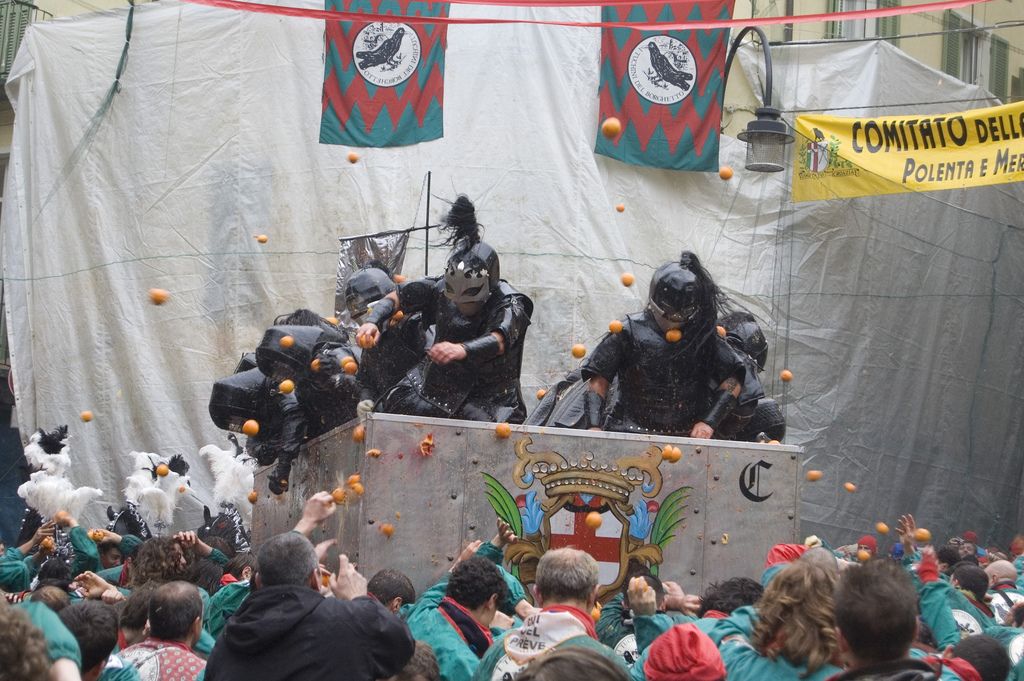
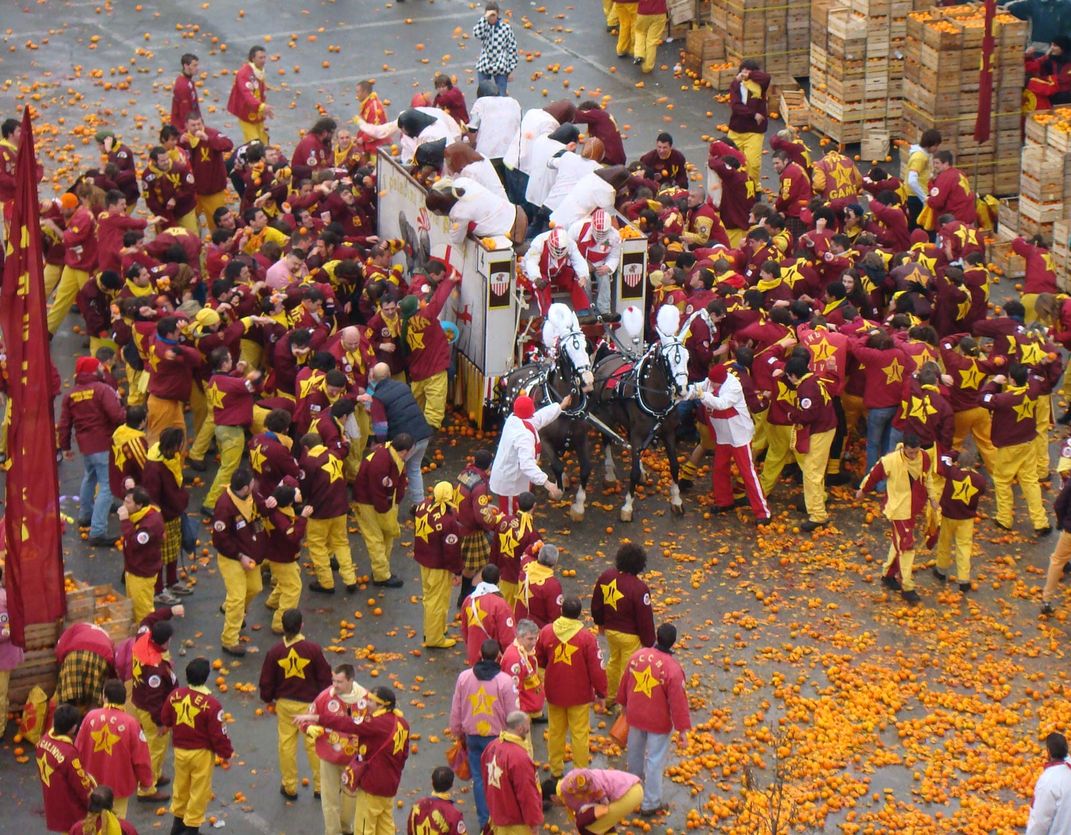
/https://tf-cmsv2-smithsonianmag-media.s3.amazonaws.com/filer/40/ca/40ca1f0f-8e50-4969-b2ec-81f028ba05d1/battle_of_the_oranges_flickr_.jpg)
/https://tf-cmsv2-smithsonianmag-media.s3.amazonaws.com/filer/b1/e3/b1e34b2d-0a4f-4e7e-baf6-21bd2cb54f94/battle_of_the_oranges_ground_close_up.jpg)
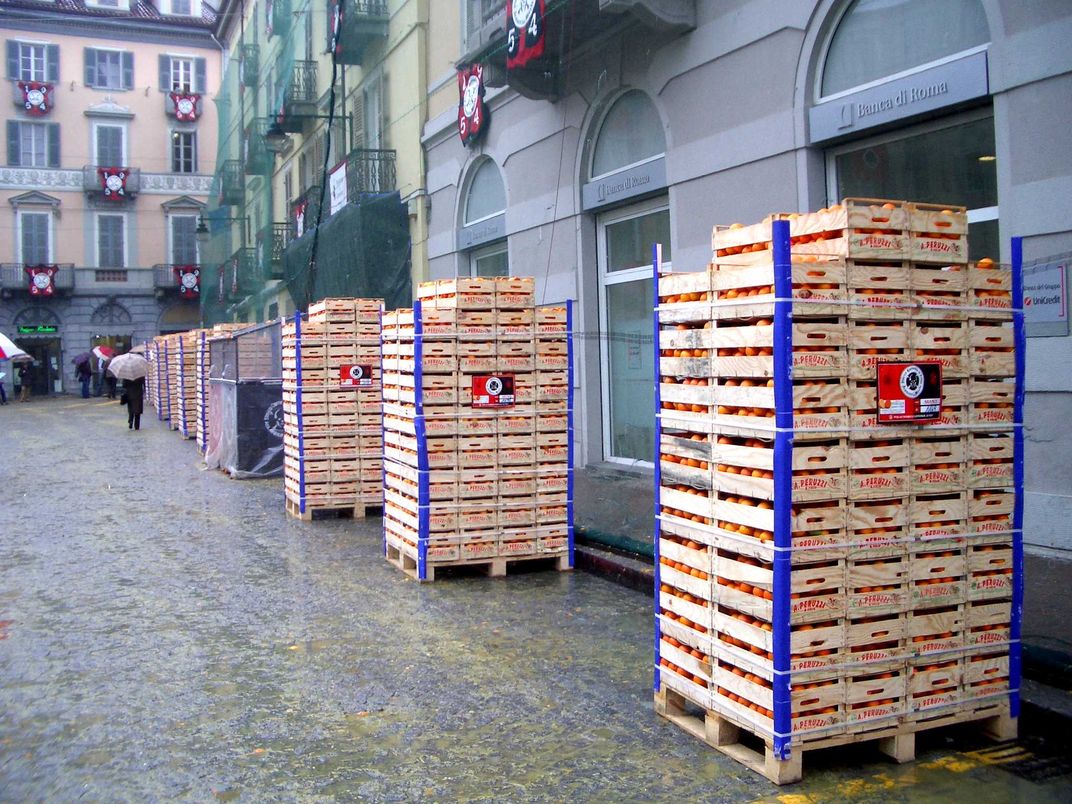
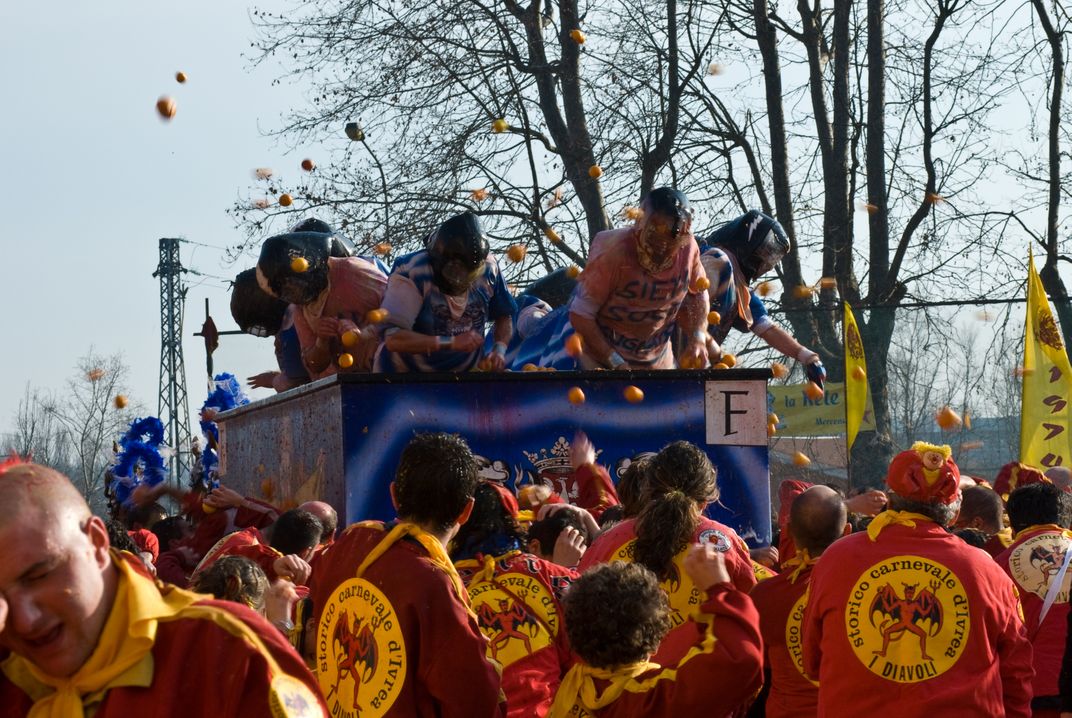
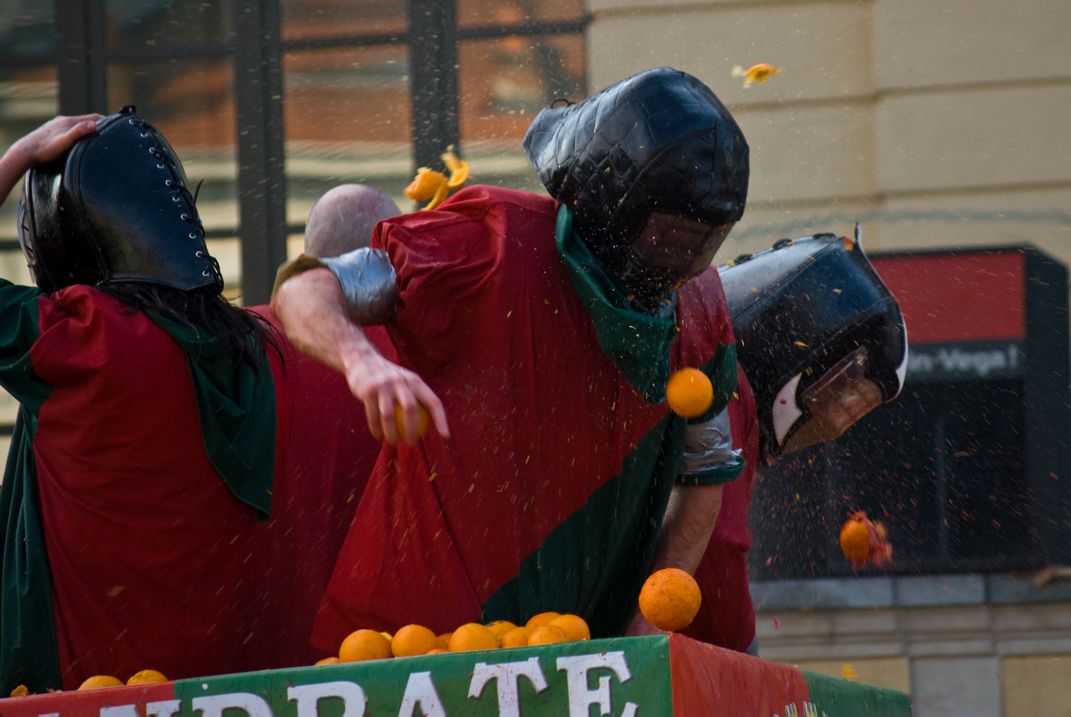

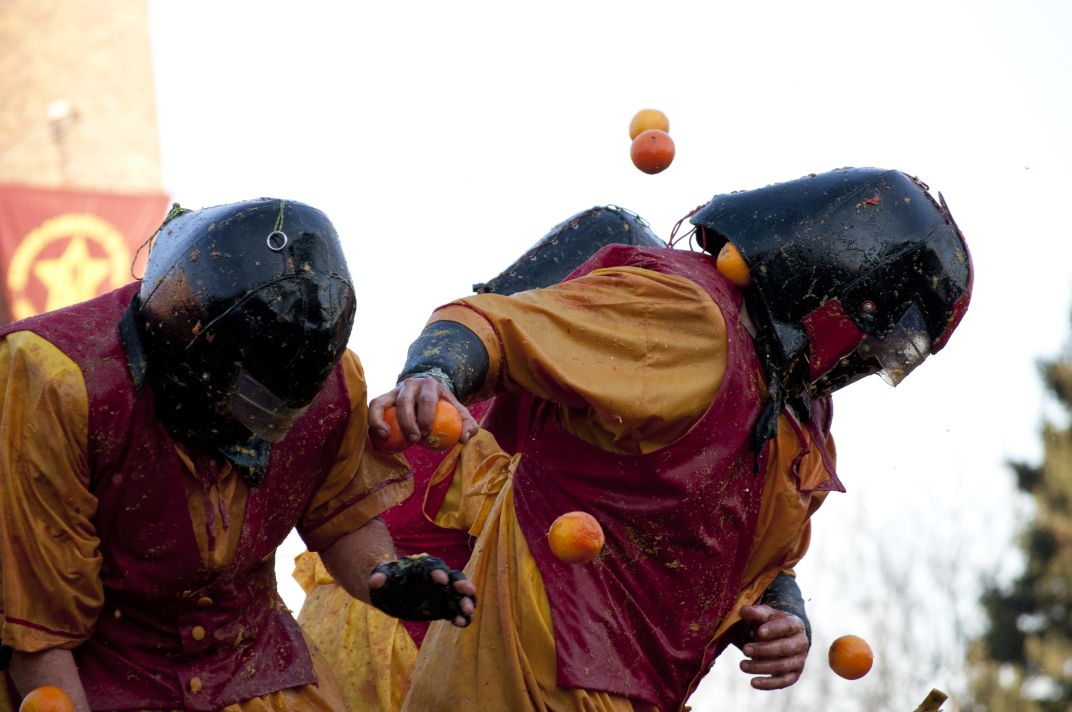
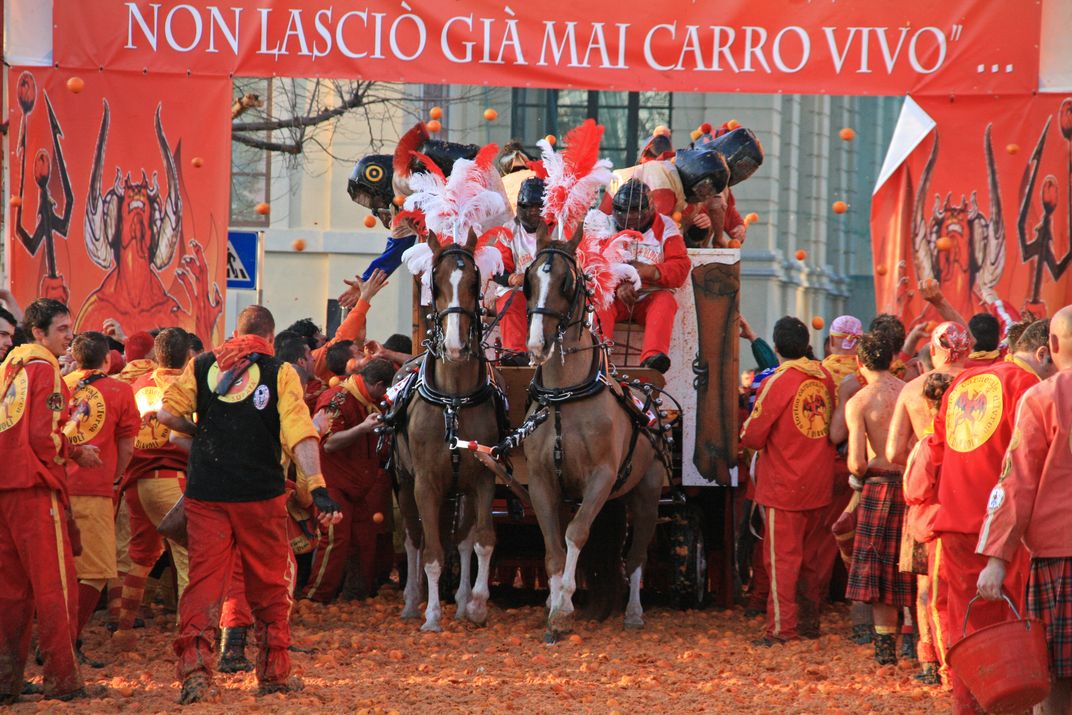
/https://tf-cmsv2-smithsonianmag-media.s3.amazonaws.com/filer/3f/ea/3feabd50-9f34-45b3-80f9-ff8bb3e32513/orange-battle-action-shot-blue.jpg)
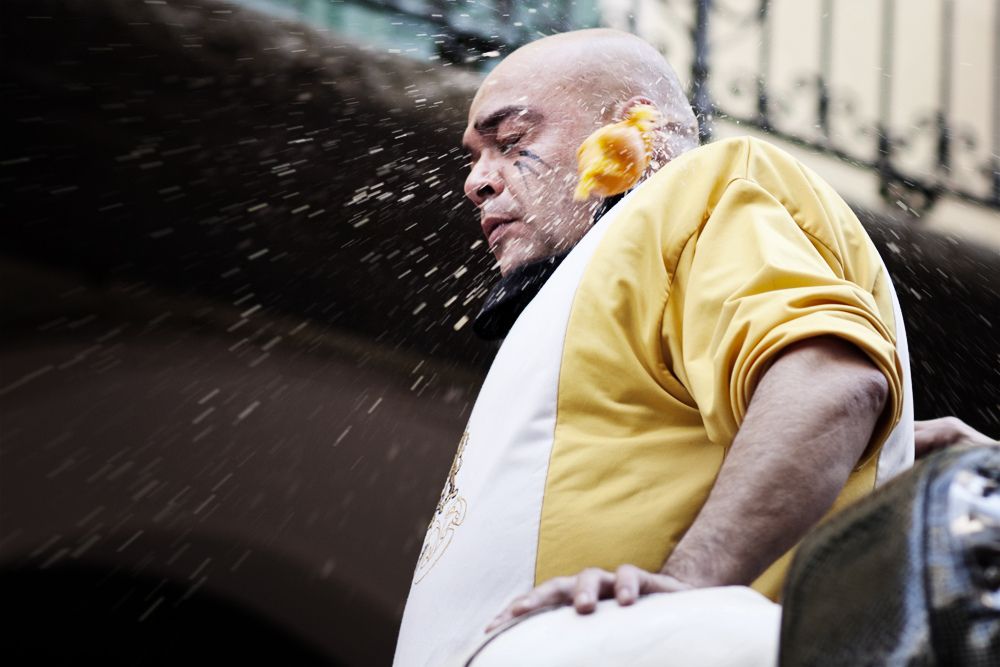
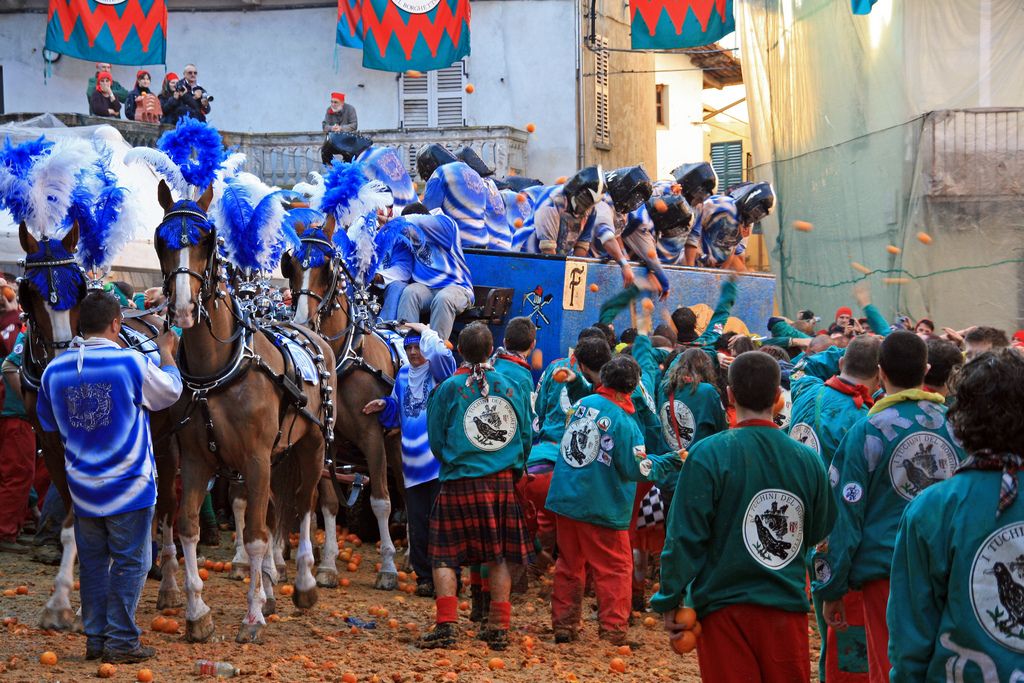
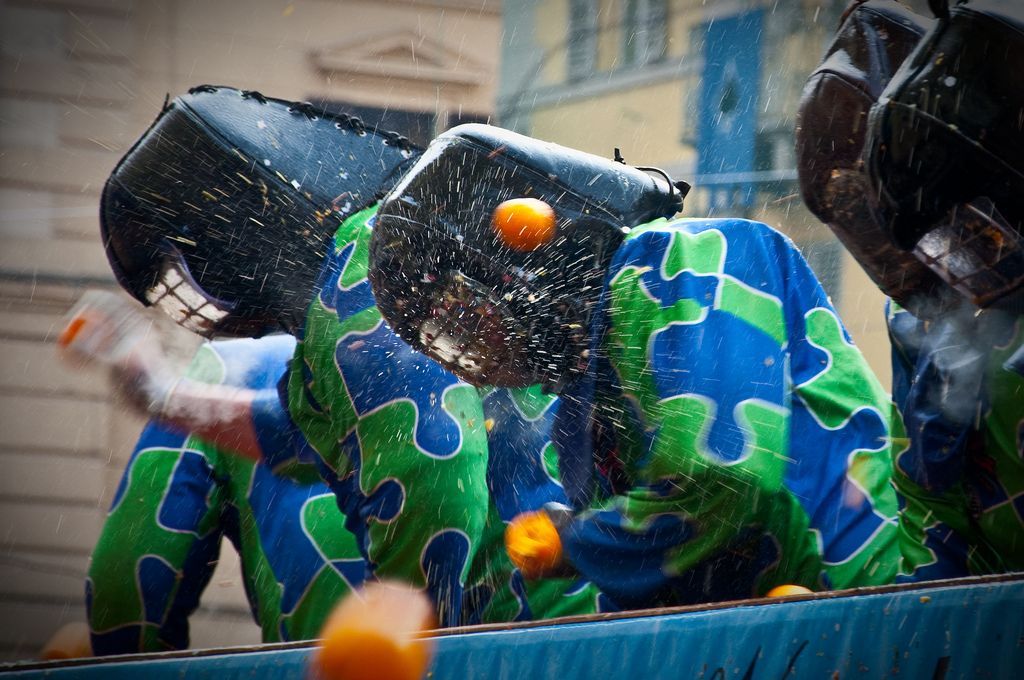
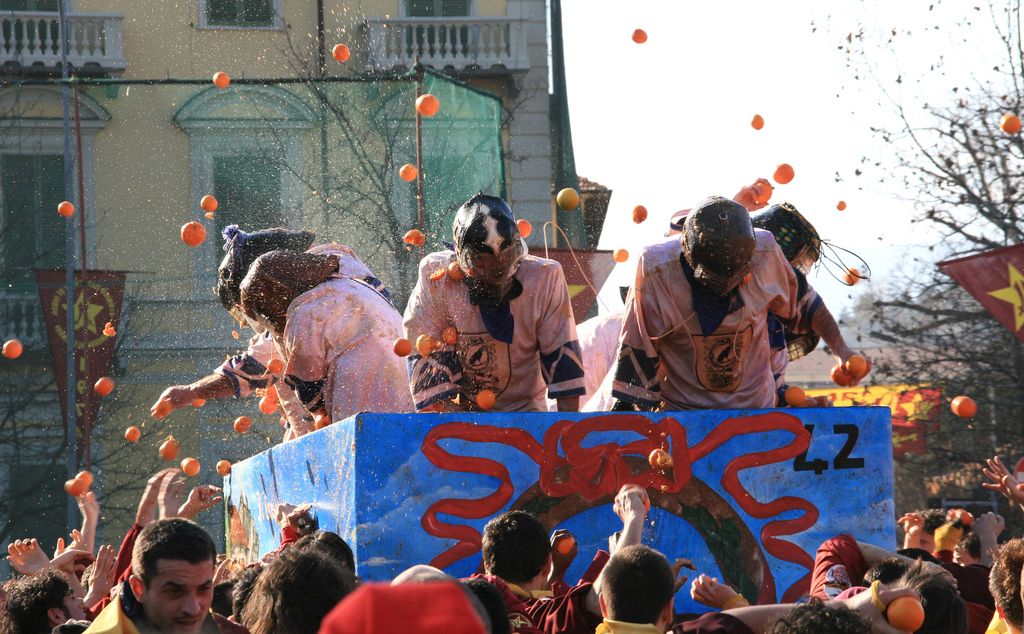


/https://tf-cmsv2-smithsonianmag-media.s3.amazonaws.com/accounts/headshot/natasha-geiling-240.jpg)